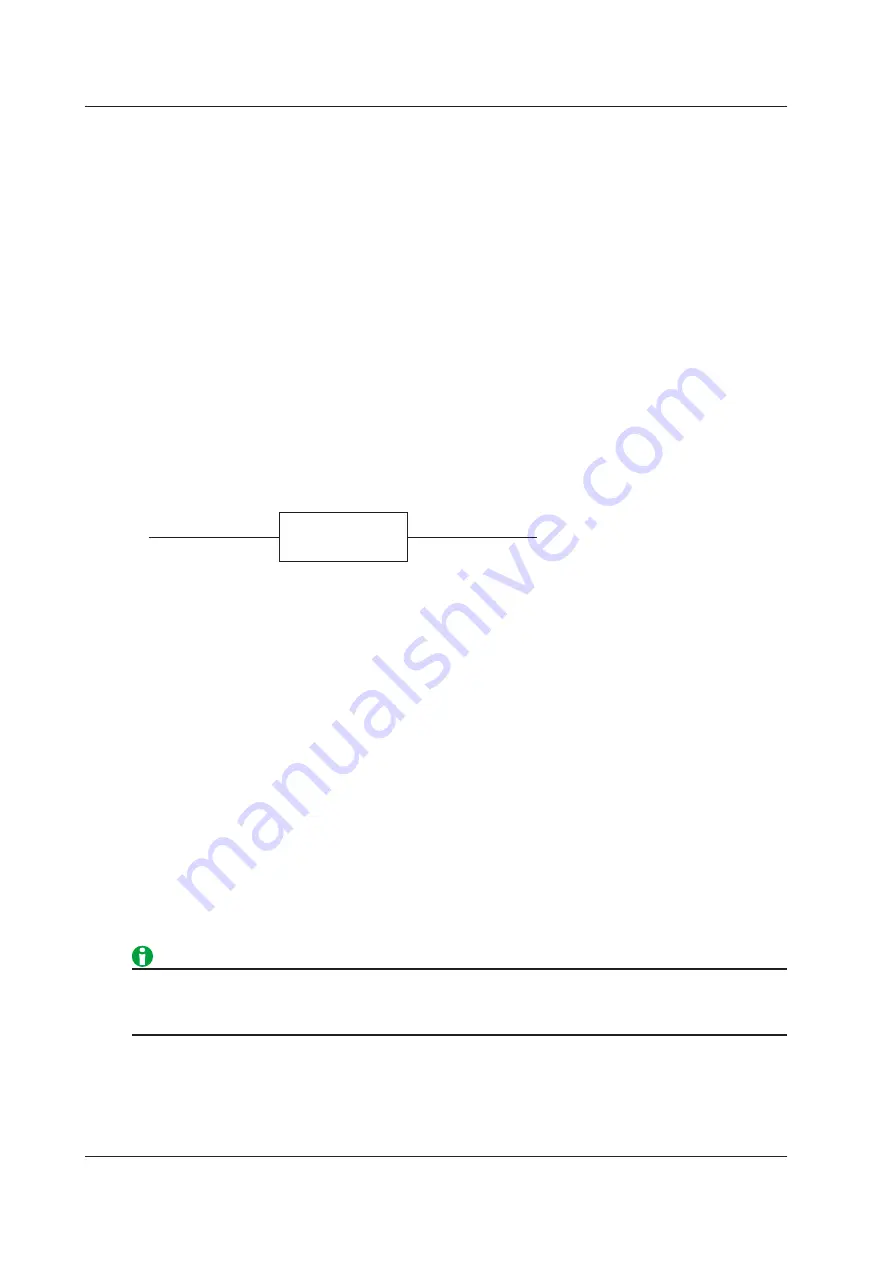
2-4
IM WT1801-01EN
Efficiency Equation (
η Formula)
You can create an efficiency equation by combining measurement function symbols. The WT1800 can determine
the energy conversion efficiency of the device using the numeric values of the measurement functions.
η1 to η4
You can create four efficiency equations (η1 to η4), using the following measurement functions as operands.
• The active powers of each element (P1 to P6)
• The active powers of the Σ functions (PΣA to PΣC)
• The motor output (Pm; on models with the motor evaluation option)
• Udef1 and Udef2
Udef1 and Udef2
To add active powers and motor output and use them in η1 to η4, use Udef1 and Udef2. You can add up to four
operands consisting of the measurement functions listed above.
Equation Examples
• Efficiency of a Single-Phase, Two-Wire Input/Single-Phase, Two-Wire Output Device
Input: Power of element 1 (P1)
Output: Power of element 2 (P2)
Efficiency equation: P2/P1 × 100 (%)
Converter
(inverter, etc.)
Input power: P1
Output power: P2
• Efficiency of a Single-Phase, Two-Wire Input/Three-Phase, Three-Wire Output Device
Input: Power of element 1 (P1)
Output: Σ power of elements 2 and 3 (PΣA)
Efficiency equation: PΣA/P1 × 100 (%)
• Efficiency of a Three-Phase, Three-Wire Input/Three-Phase, Three-Wire Output Device
Input: Σ power of elements 1 and 2 (PΣA)
Output: Σ power of elements 3 and 4 (PΣB)
Efficiency equation: PΣB/PΣA × 100 (%)
• Efficiency of a Motor with a Single-Phase, Two-Wire Input
Input: Power of element 1 (P1)
Output: Motor output (Pm)
Efficiency equation: Pm/P1 × 100 (%)
• Efficiency of a Motor with a Three-Phase, Three-Wire Input
Input: Σ power of elements 1 and 2 (PΣA)
Output: Motor output (Pm)
Efficiency equation: Pm/PΣA × 100 (%)
To correctly compute the efficiency, set the power coefficients of all elements so that all power units used in
the computation are the same. For example, the efficiency cannot be computed correctly if elements or wiring
units used in the computation have different power units, such as W (watt) and J (joule).
2 Fundamental Measurement Conditions
















































